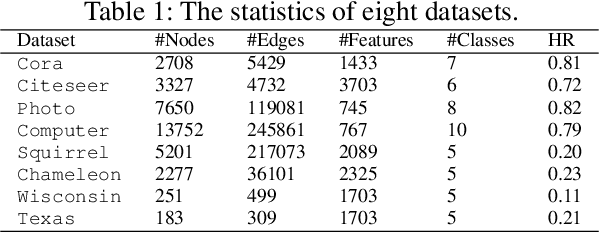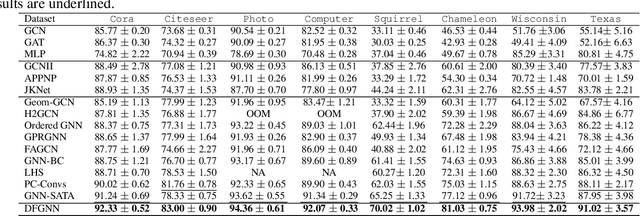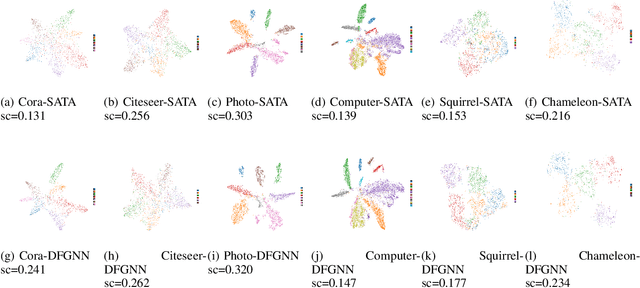Yachao Yang
Dual-Frequency Filtering Self-aware Graph Neural Networks for Homophilic and Heterophilic Graphs
Nov 18, 2024



Abstract:Graph Neural Networks (GNNs) have excelled in handling graph-structured data, attracting significant research interest. However, two primary challenges have emerged: interference between topology and attributes distorting node representations, and the low-pass filtering nature of most GNNs leading to the oversight of valuable high-frequency information in graph signals. These issues are particularly pronounced in heterophilic graphs. To address these challenges, we propose Dual-Frequency Filtering Self-aware Graph Neural Networks (DFGNN). DFGNN integrates low-pass and high-pass filters to extract smooth and detailed topological features, using frequency-specific constraints to minimize noise and redundancy in the respective frequency bands. The model dynamically adjusts filtering ratios to accommodate both homophilic and heterophilic graphs. Furthermore, DFGNN mitigates interference by aligning topological and attribute representations through dynamic correspondences between their respective frequency bands, enhancing overall model performance and expressiveness. Extensive experiments conducted on benchmark datasets demonstrate that DFGNN outperforms state-of-the-art methods in classification performance, highlighting its effectiveness in handling both homophilic and heterophilic graphs.
DGNN: Decoupled Graph Neural Networks with Structural Consistency between Attribute and Graph Embedding Representations
Jan 28, 2024Abstract:Graph neural networks (GNNs) demonstrate a robust capability for representation learning on graphs with complex structures, showcasing superior performance in various applications. The majority of existing GNNs employ a graph convolution operation by using both attribute and structure information through coupled learning. In essence, GNNs, from an optimization perspective, seek to learn a consensus and compromise embedding representation that balances attribute and graph information, selectively exploring and retaining valid information. To obtain a more comprehensive embedding representation of nodes, a novel GNNs framework, dubbed Decoupled Graph Neural Networks (DGNN), is introduced. DGNN explores distinctive embedding representations from the attribute and graph spaces by decoupled terms. Considering that semantic graph, constructed from attribute feature space, consists of different node connection information and provides enhancement for the topological graph, both topological and semantic graphs are combined for the embedding representation learning. Further, structural consistency among attribute embedding and graph embeddings is promoted to effectively remove redundant information and establish soft connection. This involves promoting factor sharing for adjacency reconstruction matrices, facilitating the exploration of a consensus and high-level correlation. Finally, a more powerful and complete representation is achieved through the concatenation of these embeddings. Experimental results conducted on several graph benchmark datasets verify its superiority in node classification task.
 Add to Chrome
Add to Chrome Add to Firefox
Add to Firefox Add to Edge
Add to Edge